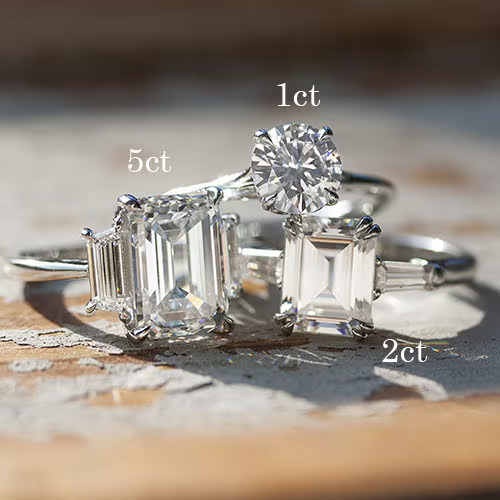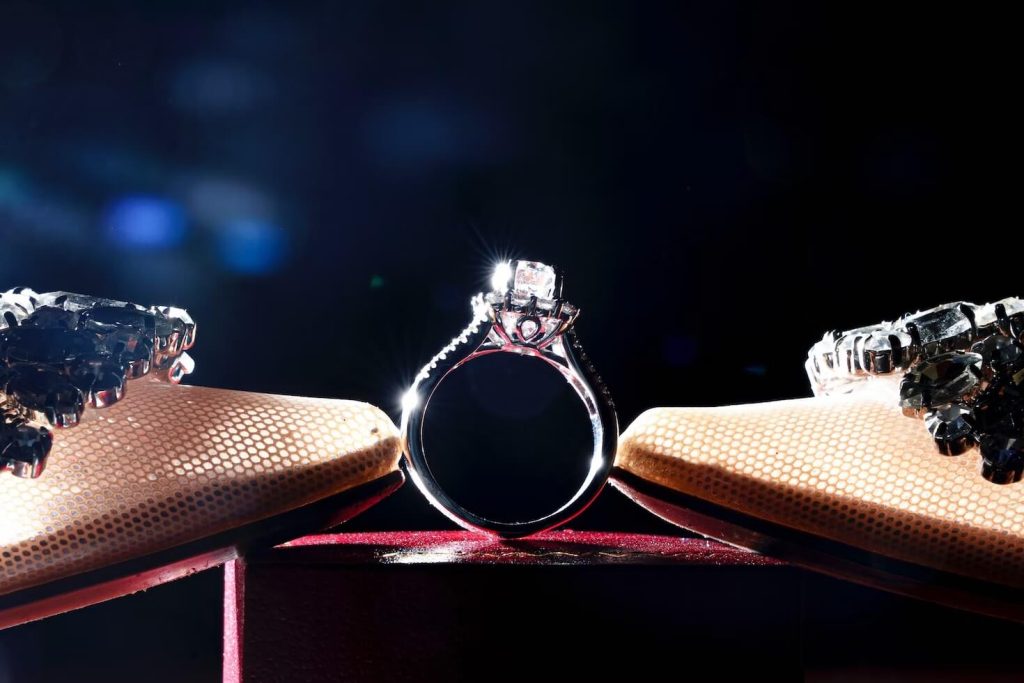5 Carat Diamond Rings: A Comprehensive Buying Guide
For those seeking the epitome of luxury and glamour, a 5-carat diamond ring is a statement of elegance and sophistication. The purchase of such a significant piece requires careful consideration and an understanding of key factors. In this guide, we delve into the intricacies of buying a 5-carat diamond ring, covering crucial aspects such as proportions, reputable sellers, the allure of the engagement ring, and the choices between large diamonds and medium-sized gems.
Five Carat Diamond: Proportions Is Everything
When it comes to the allure and brilliance of a five-carat diamond, the key to unlocking its full potential lies in the meticulous consideration of proportions. Proportions, in the context of diamonds, refer to the relationship between various dimensions and angles of the stone, influencing how it interacts with light and, consequently, how it dazzles the beholder. Here’s why, when it comes to a five-carat diamond, proportions are indeed everything.

Ideal Cut for Maximum Brilliance:
One of the primary considerations in evaluating the proportions of a five-carat diamond is the cut grade. An ideal or excellent cut grade signifies that the diamond has been expertly crafted to maximize light performance. The cut directly influences how light enters and exits the diamond, contributing to its brilliance, fire, and scintillation.
Balanced Depth and Table Percentage:
The depth and table percentage are critical components of a diamond’s proportions. The depth is the distance from the table (top) to the culet (bottom), and the table percentage is the width of the table in relation to the entire diameter of the diamond. For a five-carat diamond, achieving a balanced combination of depth and table percentage is essential for optimal light reflection and dispersion.
Symmetry and Polish for Flawless Beauty:
Symmetry and polish are two factors that contribute to the overall aesthetics of a diamond. Symmetry involves the alignment of facets, while polish refers to the smoothness of the diamond’s surface. In 5 Carat Diamond Rings, excellent symmetry and polish ensure that light travels seamlessly across the diamond’s facets, creating a captivating play of light and enhancing its beauty.
Facet Alignment for Maximum Sparkle:
The arrangement and alignment of facets on a diamond play a crucial role in determining its visual appeal. Each facet acts as a mirror, reflecting and refracting light. In a five-carat diamond, the precise alignment of facets is paramount for achieving a symphony of sparkle and brilliance.
Proportional Balance for Visual Impact:
Achieving proportional balance is the key to ensuring that a five-carat diamond appears visually appealing. This involves a harmonious relationship between the size of the table, the depth of the diamond, and the angles of its facets. Proper proportions enhance the diamond’s face-up appearance, making it appear larger and more brilliant.
Optical Symmetry for Stunning Scintillation:
Optical symmetry, which relates to the alignment of facets and how they interact with light, contributes to the scintillation of a diamond. In a five-carat diamond, flawless optical symmetry enhances the play of light and dark areas, creating a mesmerizing dance of brilliance.
Five Carat Diamond: Buying from a Reputable Seller
The significance of choosing a reputable seller cannot be overstated when investing in a 5-carat diamond. Trusted jewelers and dealers provide assurance regarding the diamond’s authenticity, quality, and ethical sourcing.
-
- Certification: Insist on a diamond with a reputable grading certificate, such as those issued by the Gemological Institute of America (GIA). These certificates provide an unbiased evaluation of the diamond’s 4Cs (carat, cut, color, and clarity).
-
- Reputation and Reviews: Research the reputation of the seller. Look for customer reviews and testimonials to gauge the experiences of previous buyers. Reputable sellers prioritize customer satisfaction and transparency.
-
- Ethical Sourcing: Ensure that the seller adheres to ethical and responsible sourcing practices. This includes a commitment to conflict-free diamonds and compliance with industry standards.
Five Carat Diamond: The Engagement Ring To Have
A 5-carat diamond is often the dream choice for an engagement ring, symbolizing enduring love and commitment. When selecting the perfect ring, consider personal preferences and the following:

-
- Setting Styles: Choose a setting that complements the diamond’s size and showcases its brilliance. Popular settings include solitaire, halo, and three-stone designs.
- Metal Choice: The choice of metal for the ring band can influence the overall aesthetic. White gold, yellow gold, rose gold, and platinum are popular options.
- Customization: Many reputable jewelers offer customization options. Consider personalizing the ring to create a unique and meaningful symbol of your commitment.
Five Carat Diamond: Large Diamonds vs. Medium Sizes
Choosing between a large five-carat diamond and one of medium size is a decision that involves a delicate balance between personal preferences, budget considerations, and lifestyle factors. Both options have their unique appeal, and understanding the distinctions can help individuals make an informed decision that aligns with their desires. Here’s a closer look at the considerations when deciding between large and medium-sized five-carat diamonds:
- Budgetary Considerations:
- Large Diamonds: Naturally, larger diamonds come with a higher price tag. The cost of a diamond increases significantly with carat weight, and a five-carat diamond will be considerably more expensive than a medium-sized diamond of, for example, three or four carats.
- Medium Sizes: Opting for a medium-sized diamond within the five-carat range allows for potential cost savings. While still a substantial and impressive stone, a medium-sized diamond might be a more budget-friendly option for individuals with financial constraints.
- Personal Style and Taste:
- Large Diamonds: Choosing a large five-carat diamond is a statement of opulence and luxury. It appeals to those who desire a bold and dramatic piece of jewelry that makes a significant impact. Individuals with a penchant for grandeur and extravagance may find larger diamonds more in line with their personal style.
- Medium Sizes: Medium-sized five-carat diamonds offer a balance between size and wearability. They provide a captivating presence without being overly ostentatious. This option may appeal to individuals who appreciate a substantial diamond while maintaining a sense of practicality and elegance.
- Comfort and Wearability:
- Large Diamonds: While a large five-carat diamond undoubtedly makes a striking impression, it can be substantial in terms of physical size. Some individuals may find larger diamonds less comfortable for everyday wear, especially if they have an active lifestyle.
- Medium Sizes: Medium-sized diamonds strike a balance between a significant presence and practical wearability. They are often more versatile and suitable for daily activities without compromising on elegance.
Conclusion
A 5-carat diamond ring is a timeless and exceptional choice, embodying the pinnacle of luxury in the world of fine jewelry. By understanding the importance of proportions, choosing a reputable seller, exploring engagement ring options, and weighing the considerations between large and medium-sized diamonds, you can make an informed and memorable investment in a piece that symbolizes love and commitment for a lifetime.…



